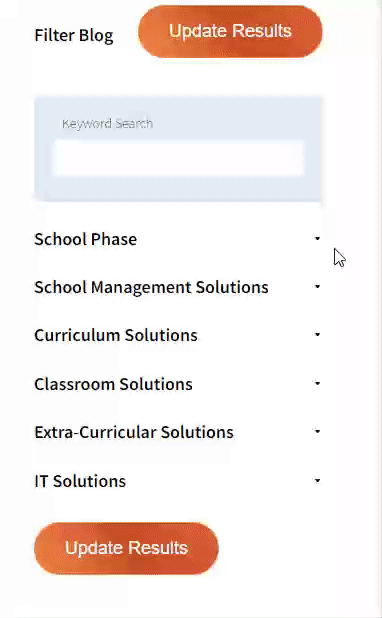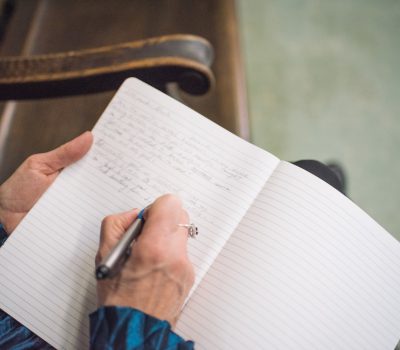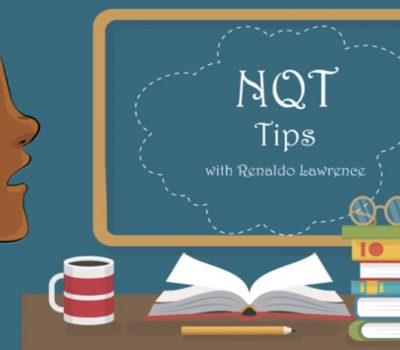


Our team sorts through all blog submissions to place them in the categories they fit the most - meaning it's never been simpler to gain advice and new knowledge for topics most important for you. This is why we have created this straight-forward guide to help you navigate our system.


And there you have it! Now your collection of blogs are catered to your chosen topics and are ready for you to explore. Plus, if you frequently return to the same categories you can bookmark your current URL and we will save your choices on return. Happy Reading!
I love computing and coding, but I always start my computing unit without touching a computer!
The word algorithm seems like a difficult word and concept for young children to understand.” This is what I have heard teachers say before but really, an algorithm is just a set of instructions. If you think about it, we use algorithms in everyday life. An algorithm is a list or set of instructions in to do something. Think about the start of the school year, we have our set routines, and we make sure that the class understand and follow the instructions in the correct order = algorithms!
My first coding lesson always starts with a dance or routine that the children are into at the time. Dance floss two years ago…check. Foot shake last September… check. This year? I saw a dance on social media that uses a grid with each person that enters the grid, following the same set of instructions, the same algorithm. It looks fab when they get going and is a visual representation of an algorithm.
I start with a chat with the kids about instructions, cause and effect, when and do. I than share a lovely video form the BBC that explains algorithms in its simplest form https://bit.ly/3mX6WNk
Next I show the dance, asking the children if they can figure out the algorithm, what is each dancer doing as they enter the squares? How can we record this? Can we use words/diagrams/pictures? With their table partners, I get the kids to discuss their thoughts. Then, off we go outside to give it a go!
During the practice, if the kids bump into each other, they are encouraged to use the word ‘bug’ and that they need to ‘debug’ their algorithm. The fact is, the kids love going outdoors and having a go at the dance and as a teacher, you step back and take it all in. The smiles, the giggles and as a bonus, the learning and understanding that oozes out is a joy to see.
I posted a video about this lesson on Facebook and within a couple of days, it had over 250,000 views. The best part was the comments from not only computing leads and teachers, but from dance teachers, PE specialist and teachers from all over the world. I even received videos from teachers in Australia, teaching a lesson that I did only a few days before in rainy Bury, being taught all the way on the other side of the world! The uniforms were different, so too the accents of the kids, but what was the same in every video, was the smiles and pure joy of the children taking part in the lesson. For me, that is what its all about.

The author

Read more

Read more

Read more

Read more

Read more

Read more

Read more

Read more


Are you looking for solutions? Let us help fund them! Nexus Education is a community of over 11,000 schools that come together to share best practise, ideas and CPD via online channels and free to attend events. Nexus also offers funding to all school groups in the UK via nexus-education.com


Established in 2011, One Education is a company at the heart of the education world, supporting over 600 schools and academies. Our unique appeal as a provider is in the breadth and synergy of the services we offer, supporting school leaders, teachers and support staff to achieve the best possible outcomes for their pupils and staff.

School Space is a social enterprise that has empowered schools for over 12 years through their profitable and hassle-free lettings services. So far, they’ve generated over £5 million in revenue for education, helping to connect over 200 schools with their local communities.


Operoo is a school operations and productivity platform. We help thousands of schools and trusts to eliminate slow, expensive and repetitive tasks. Operoo helps schools streamline and digitise processes, drastically reducing the associated costs: From student pre-admissions, permission forms, payments, and school trips; to medical information and emergency contacts, incident reporting, staff agreements, and more in over 100 languages.


Unify is an online sales and marketing tool that allows users to create tailored personalised documents in moments.


There’s nothing special about the energy we sell. In fact, it’s exactly the same energy as all our competitors provide. But there is something special about the way we do it. Where others complicate the process, we simplify it. Where others confuse customers with hidden terms, we’re an open book. And where others do all they can to make as much money from their customers as possible, we do all we can to make as little. Everything we do, we do it differently. Our customers are a privilege. One we’ll never take advantage of.


Securus provide market-leading monitoring solutions to safeguard students on ALL devices both online and offline. We also offer a full monitoring service, where we carry out the monitoring on behalf of the school, freeing up valuable staff resources. From the smallest school to large MAT groups, Securus offers safeguarding protection for all!


As European leaders of Time Management Solutions, Bodet offer Lockdown, Clock, Bell & PA Systems. Harmonys, our five-in-one IP/PoE Bell System, provides a unique customisable lockdown or panic alarm alert. Melodys, a Wireless Bell System, is useful where wiring can be difficult.